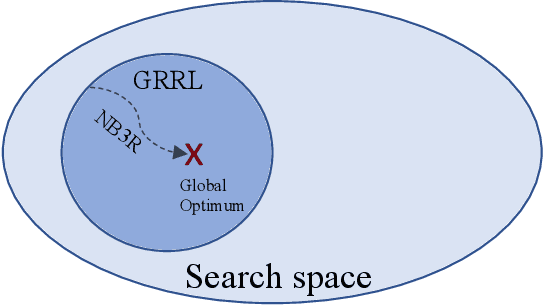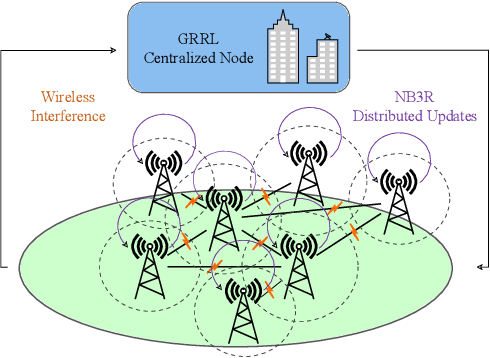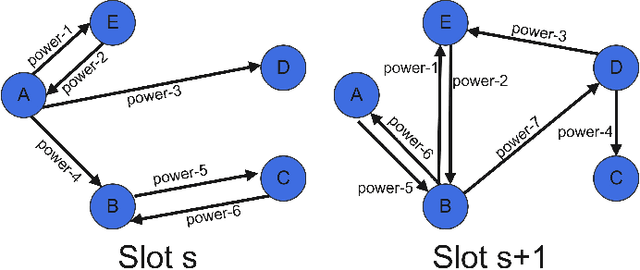Gil Kedar
Multi-Flow Transmission in Wireless Interference Networks: A Convergent Graph Learning Approach
Mar 27, 2023



Abstract:We consider the problem of of multi-flow transmission in wireless networks, where data signals from different flows can interfere with each other due to mutual interference between links along their routes, resulting in reduced link capacities. The objective is to develop a multi-flow transmission strategy that routes flows across the wireless interference network to maximize the network utility. However, obtaining an optimal solution is computationally expensive due to the large state and action spaces involved. To tackle this challenge, we introduce a novel algorithm called Dual-stage Interference-Aware Multi-flow Optimization of Network Data-signals (DIAMOND). The design of DIAMOND allows for a hybrid centralized-distributed implementation, which is a characteristic of 5G and beyond technologies with centralized unit deployments. A centralized stage computes the multi-flow transmission strategy using a novel design of graph neural network (GNN) reinforcement learning (RL) routing agent. Then, a distributed stage improves the performance based on a novel design of distributed learning updates. We provide a theoretical analysis of DIAMOND and prove that it converges to the optimal multi-flow transmission strategy as time increases. We also present extensive simulation results over various network topologies (random deployment, NSFNET, GEANT2), demonstrating the superior performance of DIAMOND compared to existing methods.
Deep Reinforcement Learning for Scheduling and Power Allocation in a 5G Urban Mesh
Oct 04, 2022



Abstract:We study the problem of routing and scheduling of real-time flows over a multi-hop millimeter wave (mmWave) mesh. We develop a model-free deep reinforcement learning algorithm that determines which subset of the mmWave links should be activated during each time slot and using what power level. The proposed algorithm, called Adaptive Activator RL (AARL), can handle a variety of network topologies, network loads, and interference models, as well as adapt to different workloads. We demonstrate the operation of AARL on several topologies: a small topology with 10 links, a moderately-sized mesh with 48 links, and a large topology with 96 links. For each topology, the results of AARL are compared to those of a greedy scheduling algorithm. AARL is shown to outperform the greedy algorithm in two aspects. First, its schedule obtains higher goodput. Second, and even more importantly, while the run time of the greedy algorithm renders it impractical for real-time scheduling, the run time of AARL is suitable for meeting the time constraints of typical 5G networks.
 Add to Chrome
Add to Chrome Add to Firefox
Add to Firefox Add to Edge
Add to Edge